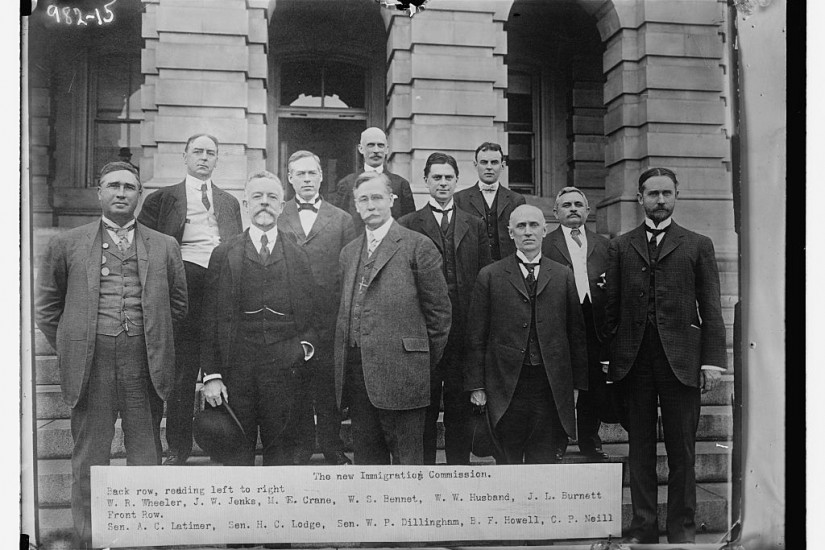The Dillingham Commission is today little known. But a century ago, it stood at the center of a transformation in immigration policy, exemplifying Americans’ simultaneous feelings of fascination and fear toward the millions of migrants who have made the United States their home.
In 1911, the Dillingham Commission produced perhaps the most extensive investigation of immigration in the history of the country, an exhaustive 41-volume study that demonstrated just how vital 19th-century and early-20th-century immigrants were to the U.S. economy. But the commission’s own recommendations, delivered in the context of a fierce backlash against migrants, set the foundation for the end of industrial-era immigration and a half-century of exclusionist policies.
Congress created the Commission in 1907 in an effort to find a compromise between proponents and opponents of immigration. During the previous several decades, pundits and lawmakers had debated the need to impose restrictions on immigration. Lawmakers enacted several polices intended to interdict those deemed to pose a specific danger, such as people afflicted with contagious diseases or involved in moral turpitude. One notable act excluded Chinese laborers, and another prohibited the entry of workers who had been hired overseas by U.S. companies.
But critics dismissed these provisions as insufficient, and instead sought laws to reduce the overall number of entrants and improve their quality, the latter of which meant attributes, like literacy, that were perceived to make it easier for newcomers to assimilate and contribute to the nation.
The literacy test, a requirement that most adult immigrants be able to read or write, became the preferred restriction. Supporters saw it as the best means of securing the “most desirable” migrants, while critics saw education as the product of opportunity, not character or potential. In 1907, when Congress could not agree on its propriety, it created the Dillingham Commission—named for its chairman, U.S. Sen. William P. Dillingham, a Vermont Republican.
Over the next three years, the nine-member commission—comprising three U.S. senators, three representatives, and three “experts” selected by President Theodore Roosevelt—fulfilled its charge by conducting a thorough and wide-ranging investigation of current and past immigration. Its multi-volume Reports is a treasure trove of information that remains profoundly useful to students of immigration today.
Most of the work centered on “Immigrants in Industry,” but other topics of inquiry included “Immigrants in Cities,” “Children of Immigrants in Schools,” and a study of changes in immigrant physiology, the last conducted by anthropologist Franz Boas. He and his associates took head, or cranium, measurements of immigrant children in schools and concluded that the U.S. environment was engendering positive changes in “bodily form.” The children had features less like their European counterparts and more like “American types.” Commissioner Jeremiah Jenks also prepared a controversial Dictionary of Races, in which he sought definitively to identify and characterize the world’s races—or ethnic groups.
